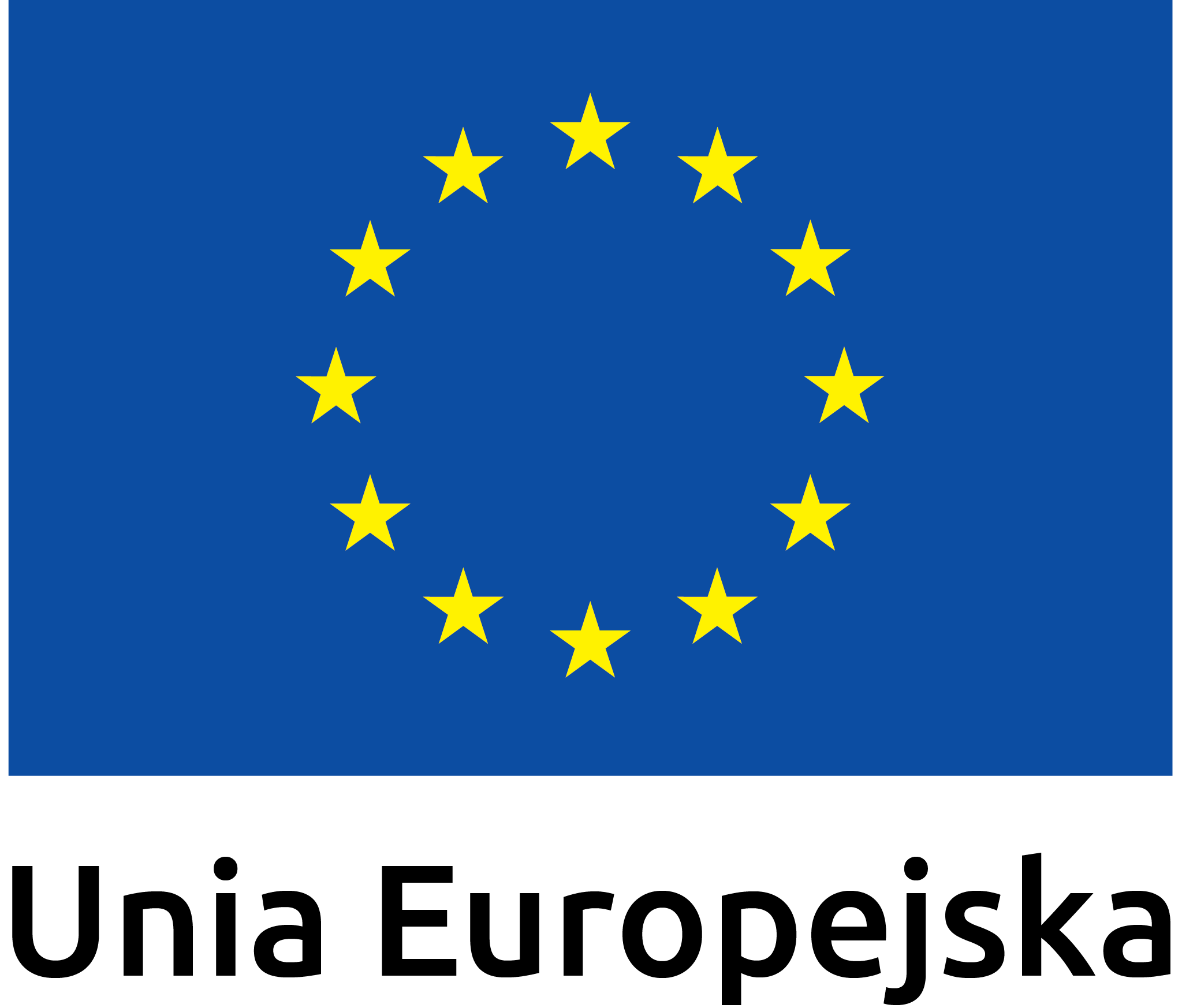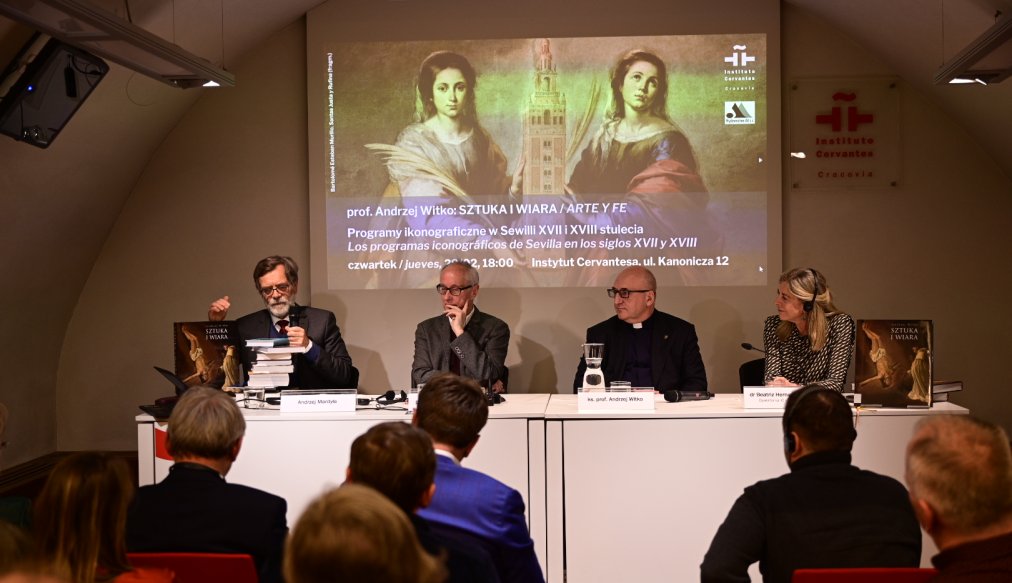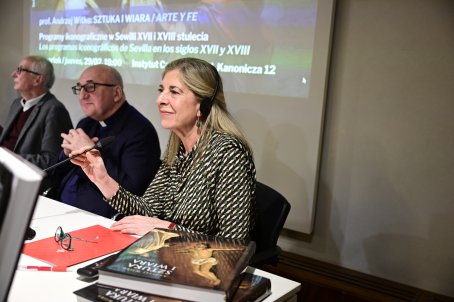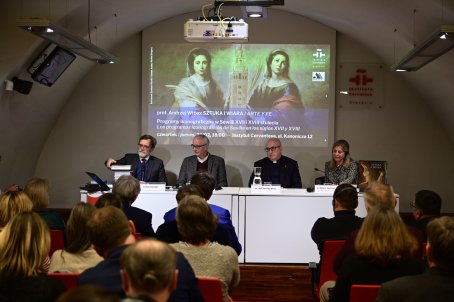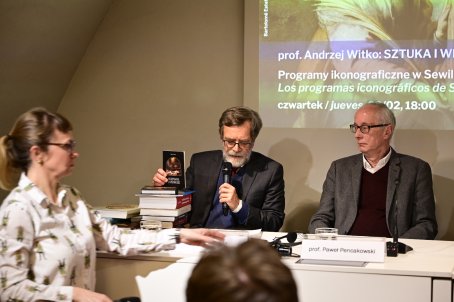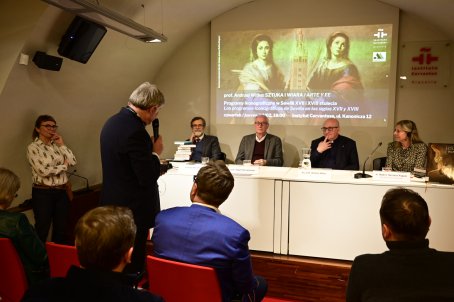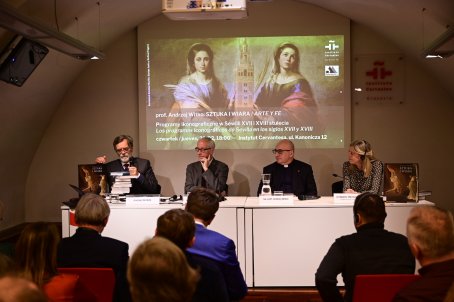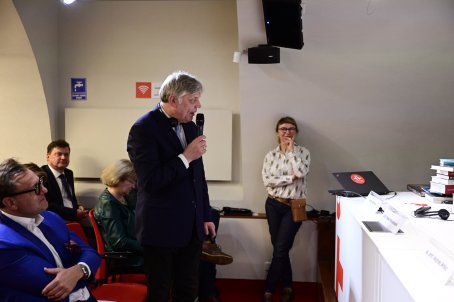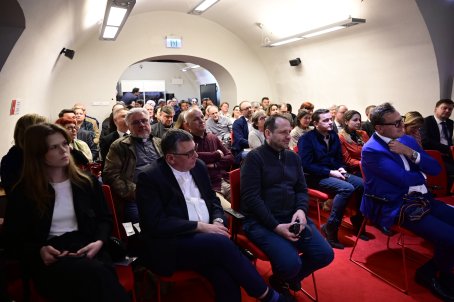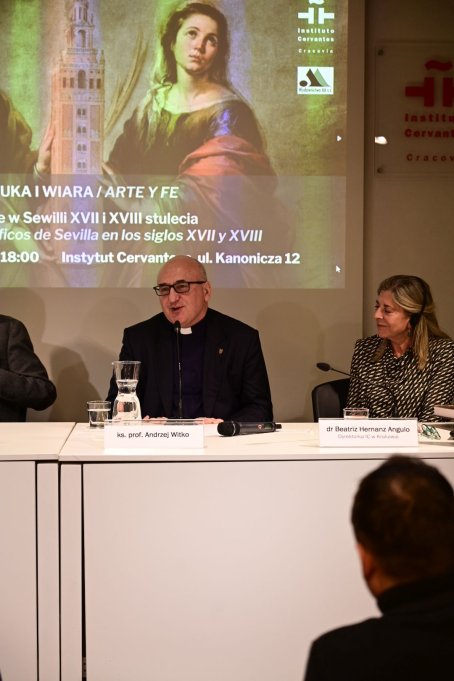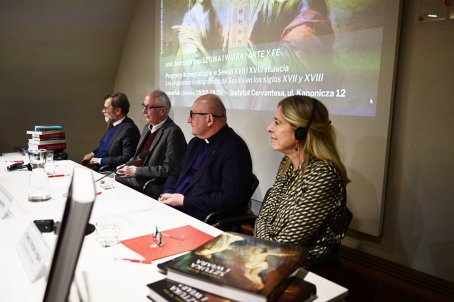Topicality
"Art and faith. Iconographic programs of Seville in the 17th and 18th centuries - new book by Fr. prof. Andrzej Witko.
At the Cervantes Institute in Krakow, Fr. met with readers. prof. Andrzej Witko, an outstanding expert on Spanish art, lecturer at the Institute of the History of Art and Culture at the Faculty of History of Art and Cultural Heritage of the Pontifical University of John Paul II in Krakow. The professor also cooperates with museum workers. He is a member of the Council of the Sądecka Land Museum. The occasion for the meeting was the publication of the professor's latest book on the bookstore market, entitled "Art and faith. Iconographic programs of Seville in the 17th and 18th centuries.
In a monumental, carefully published publication, containing approximately 300 reproductions of works of art, the author takes the reader to Spain in the 17th and 18th centuries, specifically to Seville, where the most outstanding artists of that time, such as Alonso Vázquez, Francisco de Zurbarán, Francisco Pacheca and Bartolomé Esteban, worked. Murilla. Seville, then the most populous and richest agglomeration in Spain, serves as the country's religious capital. Numerous church hierarchs carried out pastoral and scientific activities in the city, and it was they who mainly decided which artists carried out particular artistic projects. Father Professor Andrzej Witko discusses twelve unique iconographic programs by, among others, the above-mentioned artists, depicting the artistic and spiritual atmosphere of the city and, more broadly, Catholic Spain. The book was published by the Krakow AA Publishing House. The meeting promoting the publication was attended by: Fr. prof. Andrzej Witko, prof. Paweł Pencakowski from the Department of Art History and Theory of Conservation of the Academy of Fine Arts and Andrzej Mardyła, director of the AA Publishing House, and was led by Beatriz Hernanz Angulo from the Cervantes Institute in Krakow.
Fr. prof. Andrzej Witko heads the Department of the History of Modern Art at the Institute of the History of Art and Culture at the Faculty of the History of Art and Cultural Heritage of the Pontifical University of John Paul II in Krakow. He is considered one of the most outstanding experts in Spanish art in Poland. He is a member of the Royal Academy of Fine Arts of St. Telma in Spain, the Committee of Art Sciences of the Polish Academy of Sciences and the Commission of the History of Art of the Polish Academy of Arts and Sciences.
Fr. prof. Andrzej Witko heads the Department of the History of Modern Art at the Institute of the History of Art and Culture at the Faculty of the History of Art and Cultural Heritage of the Pontifical University of John Paul II in Krakow. He is considered one of the most outstanding experts in Spanish art in Poland. He is a member of the Royal Academy of Fine Arts of St. Telma in Spain, the Committee of Art Sciences of the Polish Academy of Sciences and the Commission of the History of Art of the Polish Academy of Arts and Sciences.
9 Photos
